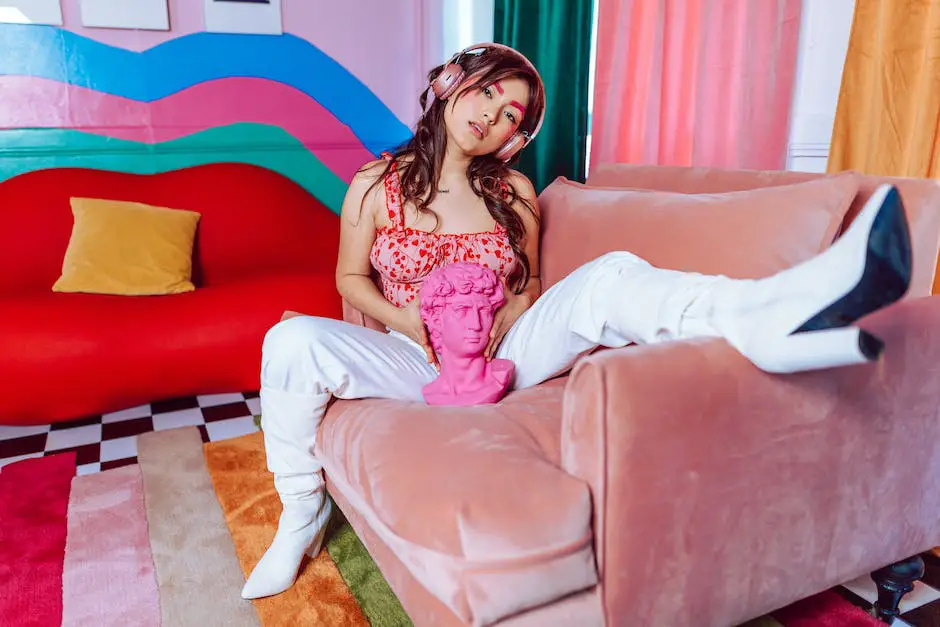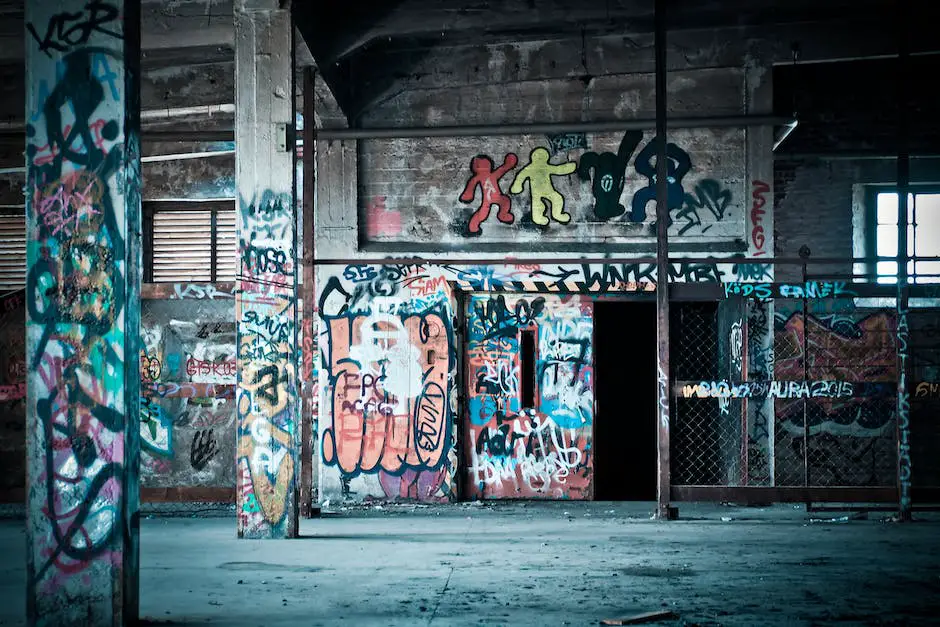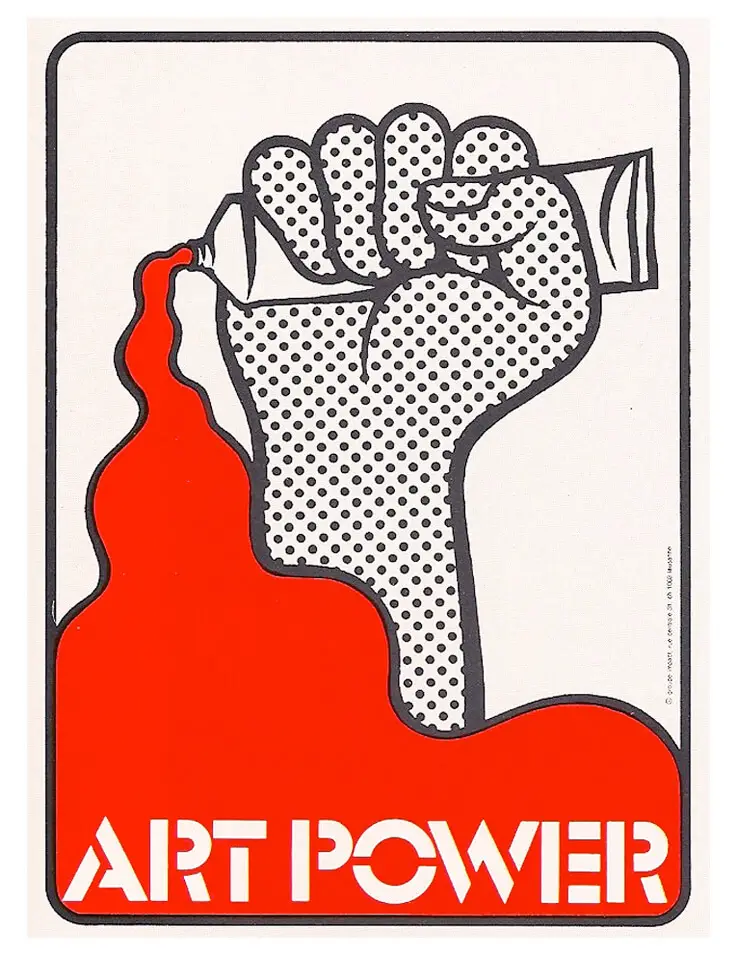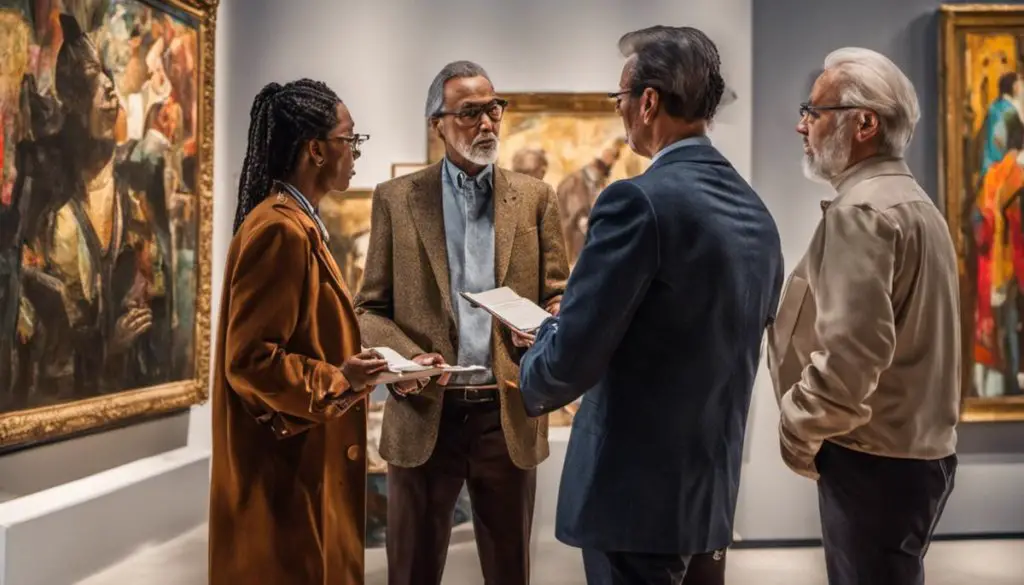Exploring Modern Art Trends: A Creative Journey

In this contemporary world, a fresh approach to art is constantly emerging which is scintillating, transgressive and transformative in nature. The canvas for these artistic expressions has become almost boundless, buoyed by the dawn of the digital age and the surging awareness of critical environmental and social issues. The advent of digital art has cast a new light on creative expressions, utilising innovative technologies and mediums that communicate voices from diverse corners through pixels and code. Reciprocally, the sustainable art movement suggests a marriage of aesthetic value and environmental consciousness, setting a new precedent in creative responsibility. At the very heart of these new-age forms is the ability of art to reflect, critique and converse about the society we inhabit, with artists boldly tackling vital topics such as politics, race, and gender equality. Street art, once stigmatised, has gradually etched itself into the mainstream, with urban landscapes serving not merely as artists’ canvas but also as constant sources of inspiration.
The Emergence of Digital Art
Immersive and boundlessly creative, digital art is revolutionising the artistic landscape of our era. This eye-catching genre can be seen as the union of art and technology, the amalgamation of human imagination and computer capabilities. So, how exactly does this avant-garde movement redefine the modern art world? Let’s discover together, through colours and pixels.
In such a historic moment when the tangible and temporal share their space with the virtual and infinite, the artistic world is shedding its binary skin. Painting and sculpture, traditionally seen as the main artistic expressions, are now just a part of a much broader spectrum. Digital art gains the tag of an intrepid explorer, sailing the sea of the new virtual environment. The very nature of this art form—intangible, ephemeral and accessible—holds the power to redefine our perceptions of art.
The uniqueness of digital art lies in its fusion of traditional art-making techniques and endless digital possibilities. Such a convergence between the ‘concrete’ and the ‘coded’ allow artists to challenge conventional norms and further push their creative boundaries, thus revolutionising our art experience.
Digital art further democratises the art world by lowering the barriers to entry. Unlike conventional art-making, large studios or expensive materials aren’t prerequisites to make digital art. With a computing device and right software, any individual can create and share their work globally. This accessibility invites more people into the creative playground, ensuring a constant influx of fresh ideas and unique perspectives.
With selfies having replaced self-portraits, and filters being the new easels, digital art also changes the way art is consumed. Social media platforms have become the new galleries, where art is accessible 24/7. This connectivity dramatically expands the potential audience for an artist’s work, which was previously limited by geography and gallery space.
Additionally, digital art is making strides in the commercial art market. The NFT, or non-fungible token, has created an entirely different way of buying, selling, and owning digital art. This blockchain-based innovation recognises the value of digital creations and provides a new form of appreciation for the artists.
Unshackled by physical limits, digital art is fluid, constantly evolving, constantly shaping the future. From being perceived as lesser-than, to now disrupting the mainstream cultural and commercial perception of art, digital art is certainly carving its own authentic space within the modern art landscape.
Digital art, therefore, is not merely an annotation in the volume of global art history; it is a fresh chapter, stretching the canvas of creativity beyond our traditional gaze. Here’s to witnessing an epoch where we shall ever so often find ourselves at the intersection of technology and art, exploring a multitude of digital hues and sketches.
The paintings could fade, but the pixels? They are here to stay. Thus, we continue, mesmerised under the spell of the digital renaissance, redefining and reimagining the means and modes of artistic expression.

Sustainable Art Movement
Our increasing awareness on the role that we all play in environmental preservation has initiated a paradigm shift in the world of art as well. Now, more than ever, artists are using their unique abilities to not just tell poignant stories concerning the environment, but to also drive sustainable actions in their art practices and beyond. In this light, we delve into how art is contributing to sustainability and the spread of environmental consciousness.
Sustainability is now a recurring theme in the world of art, with artists employing different mediums to highlight its significance. At the bedrock of this movement are pieces that use recycled and repurposed materials. These exhibit an unparalleled creativity, while simultaneously sending a potent message against wasteful consumer culture. They remind us of the redemption found in reusing resources, reducing our waste, and recycling when we’ve squeezed out the last possible use.
Artists are best known for holding up mirrors to society and, currently, those mirrors reflect the state of our natural environment. In response, eco-art has gained significant traction. This genre not only brings attention to the environmental crisis but actively contributes to the solution. Land artists, for example, create striking outdoor installations using natural materials, demonstrating an artful approach to integrating human activity with the ecosystem, without destruction.
Next, we look to murals and street art that boast an eco-friendly ethos. These outdoor exhibitions engender community engagement and dialogue on climate change and social environmental injustices. Their visibility also bolsters recognition of local environmental issues, encouraging a grassroots form of environmental education.
Interactive installations have also burst onto the scene, using sustainable themes to evoke thought and impression. Here, viewers are encouraged to participate by leaving a trail of their environmental effects. The resulting awareness showcased by these exhibitions triggers conversations around sustainability and spurs individuals to take climate positive actions in their personal and professional lives.
Moreover, the innovative use of digital tools has fostered a new wave of environmental art that transcends traditional physical bounds. Digital projections onto natural landscapes or architectural structures captivate global audiences while eliminating wastefulness associated with tangible works. This new form of artistic expression delivers an immersive experience, pairing the beauty of nature with digital wizardry to underscore the urgency of protecting our environment, without any physical footprint involved.
Lastly, art has breathed life into environmental policy and activism. Artists partner with environmental non-profit organisations or eco-conscious brands to create powerful expressions of the state of the world. These partnerships spearhead the spread of important messages and stimulate social change towards better environmental practices.
Art has always been a monumental tool in visualising our experiences and articulating our aspirations. As we grapple with an environmental crisis, art, in its many forms, is not just a witness, but an active participant, innovatively inspiring human ingenuity towards a more sustainable future. It is reshaping the boundaries, causing us to situate ourselves within the broader ecosystem, and inviting us to evaluate our impact, painting a collective call to environmental consciousness.

Art and Social Commentary
Applying Artistry to Social Commentary
Without a doubt, artists play a pivotal role in society, providing a unique perspective on various social concerns, global issues, and societal norms through their ingenious creations. Whether as alerting mechanisms or enlightening inspirations, art continuously serves as a profound commentary on social issues, bridging the gap between the observer and the reality of worldly affairs.
Art as a Form of Protest
In many instances, artists utilise their craft as a form of protest. These protest art pieces represent a peaceful yet poignant way of expressing dissatisfaction with societal issues such as racism, gender inequalities, and political corruption. Through telling tales of voices unheard and experiences unseen, they invoke empathy, understanding, and action in their onlookers. The guerilla street art of Banksy, for example, is renowned globally for challenging societal norms and government policies, often under the shroud of anonymity.
Advocating for Human Rights
Art has undeniably been an integral part of the fight for human rights. Using aesthetics and symbolism, it captivates and educates on vital issues like racial injustice, refugee crises, and LGBTQ+ rights. Artists like Ai Weiwei with his installations and sculptures have boldly denounced governmental regimes, challenging the status quo and advocating for freedom and democracy.
Art and Mental Health
Recognising the crucial role of self-expression in mental wellbeing, many artists are highlighting the struggle with mental health through their work. By visualising feelings of anxiety, depression, or loneliness, these pieces not only open up a dialogue on mental health but also offer consolation and connection to those experiencing similar issues. Instilling the concept of mental health into art can ultimately reshape public perception and lessen stigma, inspiring more people to seek help when needed.
Commenting on Consumerism
In the age of accelerated consumer culture, artists are utilising their unique perspective to comment on insane consumerism and its effects. Creating art pieces from consumer goods or integrating brand logos into artwork, artists like Barbara Kruger and Jeff Koons have criticised mass consumption’s intensity in modern society. These works intrigue onlookers, forcing them to question the values society champions and whether these align with their ethical and moral beliefs.
In conclusion, art has emerged as a language understood worldwide, breaking barriers and transcending racial, gender, and cultural differences. Artists continue to utilise this universal tongue to comment on societal issues, influencing observers and triggering meaningful conversations. Through art’s profound voices and vivid visions, social change becomes not just a possibility, but a vivid reality in the making.

The Influence of Street Art
The Advent of Street Art: From Outcast Imagery to Celebrated Modern Art
From the mesh of paint, texture, and vision, an example of creative buzz clamours onto the cityscape. That’s the essence of street art: unapologetic, colourful, and teeming with raw emotion. Today, this urban tapestry has claimed its rightful space in the echelons of modern art, transforming from an urban misfit to a cultural sensation.
When one gazes at the evolving canvas of street art, it’s evident that it mirrors many societal shifts. Like a phoenix arising from its ashes, street art has shaken off its initial stereotype of mere graffiti or vandalism. Today, it transcends societal norms, telling compelling stories about our communities, our lives, and our hopes.
A fascinating and pivotal function of art is its inherent power to relay a universal language, a message. In the case of street art, one sees this exemplified in its role as a form of protest. When words fail, art steps in- silent yet eloquently loud, a painted voice screaming amongst the passersby. Sprayed murals have often spoken louder than rallying cries, underscoring pressing issues such as migration, homelessness, and racial discrimination.
Equally intriguing is street art’s role in advocating for human rights. Artists skillfully couch potent messages within eye-catching visuals, drawing attention to topics that thwart mainstream dialogues. Organisations even leverage street art as a powerful public awareness tool, commissioning pieces that not only aestheticise urban locales but also shed light on human rights issues.
With escalating daily stressors, conversations about mental health have found themselves accentuated on urban walls. Street art stepped up, serving as a candid, public discourse on mental health. While this approach subtly de-stigmatizes such hushed topics, it also fosters empathy and understanding within communities, reminding us all of the essentiality of mental wellbeing.
Perhaps what is most cheeky and perhaps brilliantly so, street art has become a canvas for critiquing consumerism. Palette-driven commentaries denounce the hourglass maw of mass-consumption while promoting conscious, sustainable living. Spearheaded by artists like Banksy, these visually witty satires have garnered international attention and provoked necessary discussions on the role of rampant consumerism in society.
So, while once perceived as urban detritus, street art has evolved into a celebrated expression of creative freedom. It is the voice of the voiceless and a window into societal triumphs and tribulations. Hence, today, street art isn’t merely tolerated; it’s celebrated as a valuable contributor to culture, dialogue, and aesthetic diversity. In short, it’s now recognised as a bona fide modern art form, an exciting testament to human creativity.

The beauty of art lies in its relentless evolution and its power to articulate the zeitgeist. The rise of digital art has radically reshaped our understanding of artistic expressions, extending them beyond physical materials into the realm of pixels and software. Pairing creativity with ecological concern, artists adhering to the sustainable movement are redefining the very blueprint of artistry with thoughtfulness embedded in their workmanship. Rendering art as a vessel of social commentary has amplified pertinent discussions, thus helping to shape a more cerebral, conscientious society. Amidst these varied expressions, street art has traced a remarkable journey from defiance to respect, affirming its ability to enliven city facades while also driving the pulse of urban culture. In the complex tapestry of modern art, each strand of expression enriches our understanding of humanity, our society, and the vital issues that transform our time.
Recommend0 recommendationsPublished in Art Movements







